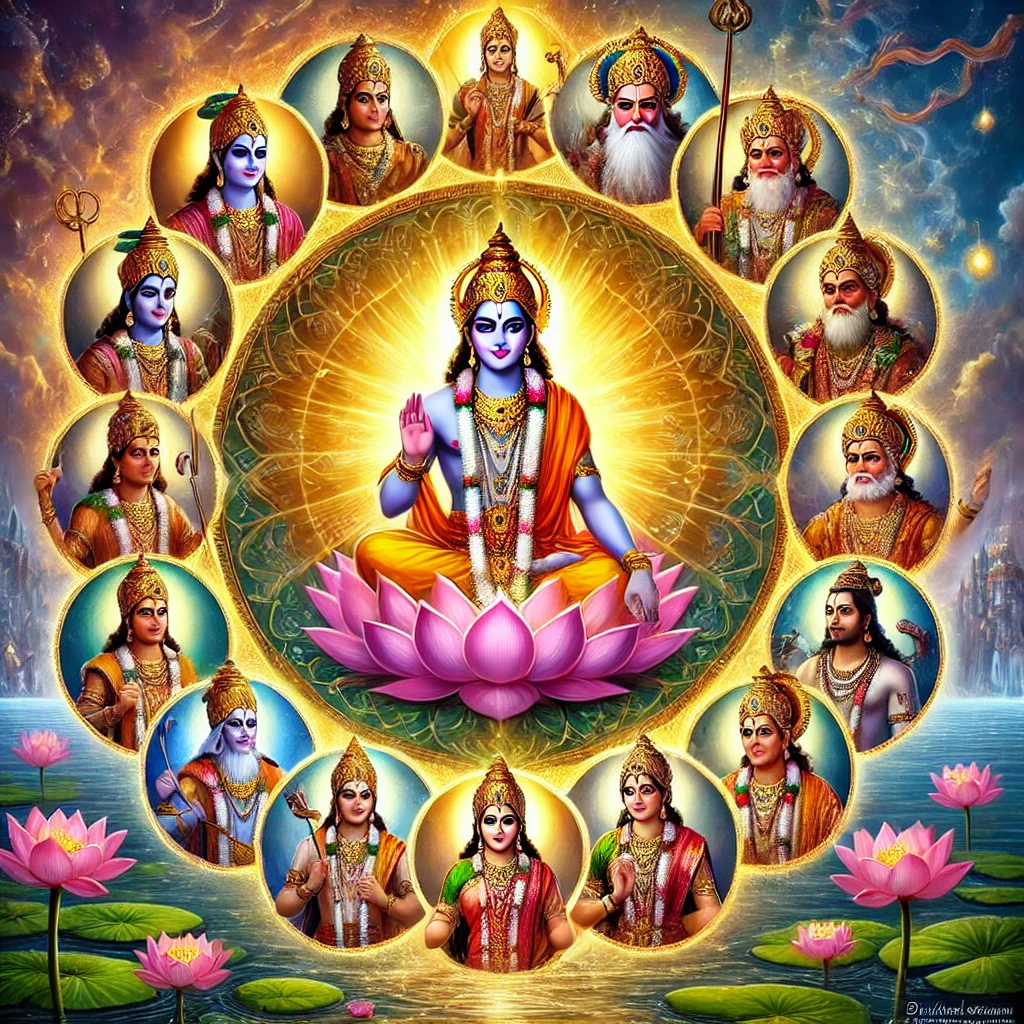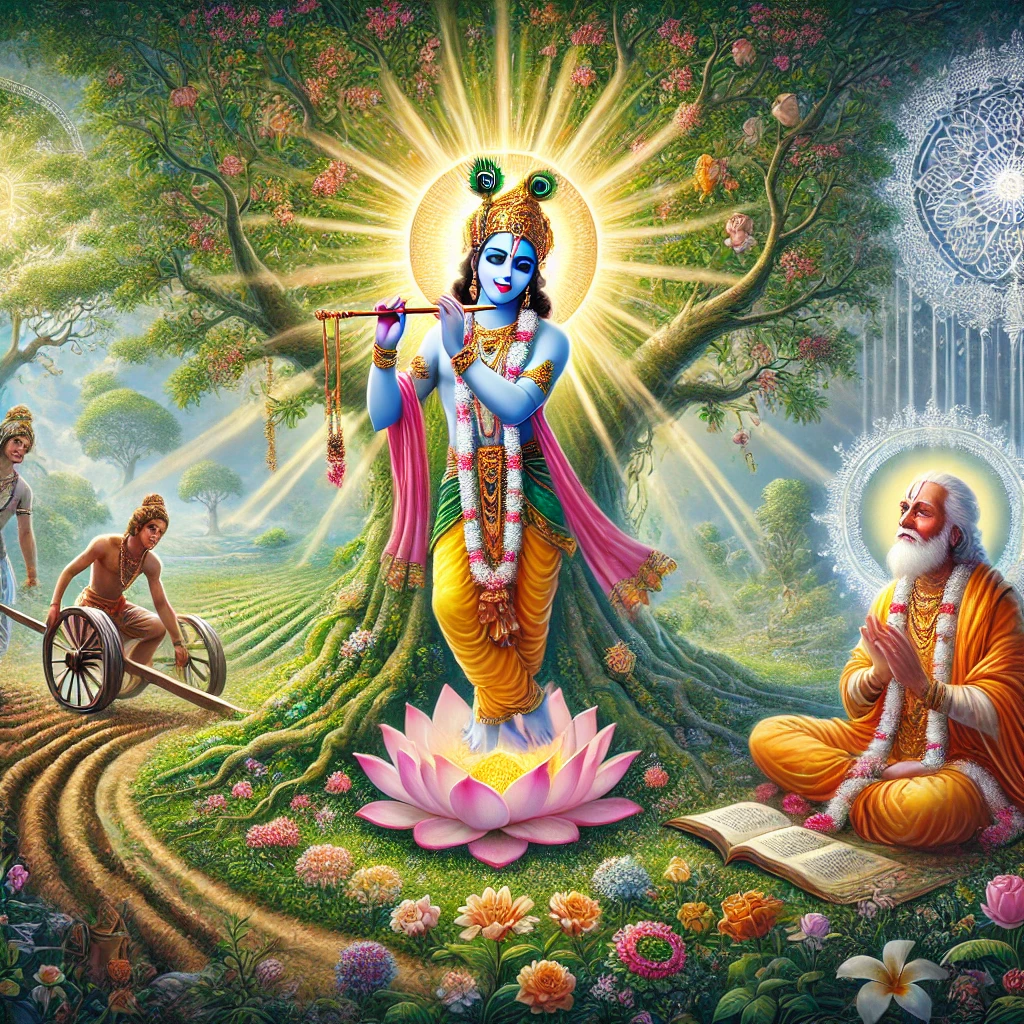Wealth, Knowledge, and Power in
India’s History and Future
Introduction

India, historically known as Bharat, is a land steeped in tales of immense wealth, profound knowledge, and spiritual wisdom. Yet, despite these treasures, its history is also marked by repeated invasions that plundered its riches and challenged its sovereignty. Halder raises a poignant question: if India possessed such abundance in the past, was it merely a lack of eagerness to fight or defend that led to its losses? And if so, why do we hesitate to respond to provocations today, even as we pursue peace and economic growth? This blog explores India’s historical wealth and vulnerability, its current strategic caution, and the interplay of material and spiritual strengths across time. With references to Saraswati, Laxmi, Parvati, Brahman, and Vishnu, we delve into a narrative that spans millennia, aiming for an insightful reflection that exceeds 1000 words.
India’s Golden Past: Wealth and Wisdom
In ancient times, India was celebrated as Sone ki Chidiya—the Golden Bird—a metaphor for its unparalleled wealth. Travelers like Megasthenes, who visited during the Mauryan Empire, and Marco Polo, who marveled at the riches of South India, documented a land overflowing with gold, spices, textiles, and gems. The economy thrived on extensive trade networks, connecting India to Rome, China, and Southeast Asia. The goddess Laxmi, the divine embodiment of wealth and prosperity, seemed to shower her blessings abundantly upon this land.
But India’s richness was not limited to material possessions. It was a cradle of knowledge and intellectual pursuit. Institutions like Nalanda and Taxila were global hubs of learning, drawing scholars from as far as Greece and China. The Vedas, Upanishads, and texts like the Arthashastra and Charaka Samhita advanced philosophy, governance, medicine, and mathematics. Saraswati, the goddess of knowledge and wisdom, presided over this intellectual golden age, her presence felt in every scroll and discourse. India’s contributions—such as the concept of zero, Ayurveda, and yoga—resonated across civilizations, cementing its reputation as a beacon of enlightenment.
This dual abundance of wealth and wisdom, blessed by Laxmi and Saraswati, painted a picture of a civilization at its zenith. Yet, beneath this prosperity lay a vulnerability that history would soon expose.
Invasions: Why Did Bharat Falter?
Despite its riches, India faced wave after wave of invasions. From Alexander the Great in 326 BCE to the Persian incursions, the Islamic conquests under Mahmud of Ghazni, the Mughal expansions, and finally the British colonization, foreign powers repeatedly breached its borders. Halder ponders whether this was due to a lack of eagerness to fight or defend—a reluctance to wield the sword when the pen and plow were more revered.
Several factors may explain this vulnerability. First, India was rarely a unified entity. Fragmented into kingdoms and princely states, it lacked the cohesive military might to repel invaders. Rivalries between rulers often overshadowed the greater threat, leaving the land open to exploitation. Second, the cultural ethos, deeply influenced by philosophies of ahimsa (non-violence) and spiritual pursuits, may have prioritized inner strength over martial prowess. The goddess Parvati, embodying power and resilience, reminds us that strength is multifaceted—yet, in practice, India’s rulers often leaned toward diplomacy or detachment rather than confrontation.
Moreover, the sheer wealth of India acted as a magnet for invaders. Like moths to a flame, conquerors were drawn to its treasures, willing to wage war for what Bharat seemed reluctant to fiercely protect. This raises a critical question: did the abundance blessed by Laxmi become a curse, inviting plunder when not guarded by Parvati’s might?
The Modern Dilemma: Caution Until a 10 Trillion USD Economy
Fast forward to today, and India stands at a crossroads. As a nation aspiring to become a 10 trillion USD economy, it prioritizes development and peace over conflict. Nabaday Halder notes a popular idea: until this economic milestone is achieved, India must remain cautious, avoiding provocations that could derail its progress. This strategy is rooted in pragmatism—economic strength underpins military power and global influence. A robust GDP enables investments in defense, infrastructure, and diplomacy, ensuring sovereignty in an interconnected world.
Yet, this hesitation echoes the past in unsettling ways. Modern India seeks to reclaim its historical glory, but it treads carefully, balancing growth with restraint. The government invests heavily in initiatives like Make in India and Digital India, aiming to harness wealth and innovation once more. However, external challenges—border disputes, geopolitical tensions—test this patience. Is this caution a strength, or does it risk repeating history’s mistakes?
Lessons from the Past: Wealth and Knowledge Were Not Enough
Reflecting on history, Bhaskar Halder highlights a stark truth: even when India was the wealthiest and most knowledgeable, it lost. The invasions succeeded not because India lacked resources or intellect, but because it failed to translate these into unassailable defense. The Mughal treasuries overflowed with gold, yet they too fell to the British. Nalanda’s libraries burned under Bakhtiyar Khilji’s raid, its wisdom reduced to ashes. Wealth and knowledge, without the will or means to protect them, proved insufficient.
In ancient texts, divine weapons like Dapar yoga (possibly a reference to spiritual disciplines) and divvastra (celestial armaments wielded by gods) symbolized a fusion of spiritual and martial power. Vishnu, the preserver, wielded such forces to maintain cosmic order, while Parvati’s fierce avatar, Durga, vanquished demons. These myths suggest that in earlier yugas (ages), spiritual strength bolstered physical might. But in Kaliyuga—the current age of strife and materialism—such mystical arsenals are absent. As Bhaskar observes, their impossibility today shifts the burden to tangible, strategic defenses.
This contrast underscores a timeless lesson: prosperity must be paired with protection. Brahman, the ultimate reality, represents the unity of all existence—knowledge (Saraswati), wealth (Laxmi), and power (Parvati) must harmonize under Vishnu’s preserving gaze. In the past, this balance faltered, leaving India exposed.
Bridging Past and Present: A Path Forward
So, what does this mean for India today? Economic growth is vital, and the pursuit of a 10 trillion USD economy aligns with Laxmi’s blessings. Yet, history warns that wealth alone invites envy unless safeguarded by Parvati’s strength. India’s defense budget has risen, and modernization efforts—like the Rafale jets and indigenous missile systems—signal a shift. Saraswati’s wisdom guides technological and strategic advancements, from space exploration to cybersecurity.
Nabaday Halder’s reflections urge a synthesis: development must not preclude readiness. The hesitation to respond to provocations may preserve peace short-term, but it risks emboldening adversaries if unchecked. India’s spiritual heritage—rooted in Brahman’s unity and Vishnu’s preservation—offers a philosophical anchor. By integrating economic ambition with martial resolve, India can avoid the pitfalls of its past.
Conclusion
India’s journey from the Golden Bird to a modern powerhouse is a saga of resilience and reinvention. Nabaday Halder’s inquiry into its historical losses and current caution reveals a profound truth: wealth and knowledge, though divine gifts, demand defense to endure. Saraswati, Laxmi, and Parvati, under Brahman’s infinite scope and Vishnu’s watchful care, embody the balance India must strike. As it nears its economic goals, Bharat must wield both the ledger and the shield, ensuring that its next chapter is one of triumph, not tragedy.
Laxmi’s wealth, Saraswati’s knowledge—Parvati’s power completes us.


